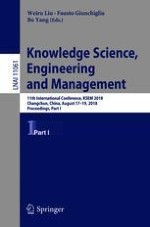This two volume set of LNAI 11061 and LNAI 11062 constitutes the refereed proceedings of the 11th International Conference on Knowledge Science, Engineering and Management, KSEM 2018, held in Changchun, China, in August 2018.
The 62 revised full papers and 26 short papers presented were carefully reviewed and selected from 262 submissions. The papers of the first volume are organized in the following topical sections: text mining and document analysis; image and video data analysis; data processing and data mining; recommendation algorithms and systems; probabilistic models and applications; knowledge engineering applications; and knowledge graph and knowledge management. The papers of the second volume are organized in the following topical sections: constraints and satisfiability; formal reasoning and ontologies; deep learning; network knowledge representation and learning; and social knowledge analysis and management.
